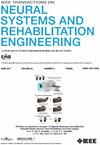Triple-E Principle: Leveraging Occam’s Razor for Dance Energy Expenditure Estimation
IF 4.8
2区 医学
Q2 ENGINEERING, BIOMEDICAL
IEEE Transactions on Neural Systems and Rehabilitation Engineering
Pub Date : 2025-03-29
DOI:10.1109/TNSRE.2025.3574739
引用次数: 0
Abstract
Objective: Dance, as a globally practiced physical activity, presents challenges in accurately assessing energy expenditure due to its diverse styles and tempos. Traditional methods, relying on empirical formulas within ActiGraph accelerometers, often result in significant biases. While multiple wearable sensors have been introduced to mitigate these biases, they increase model complexity. Methods: This study proposes the Triple-E principle—Effectiveness, Efficiency, and Extension—as a framework for developing state-of-the-art (SOTA) machine learning models aimed at accurately estimating energy expenditure, while minimizing model complexity and optimizing sensor placement. To validate the proposed approach, we recruited a cohort of 250 participants (mean age: 63.0 ± 6.0 years), each performing ballroom, aerobic, or square dance routines. Participants were fitted with ActiGraph wGT3X-BT accelerometers at five anatomical locations, along with the CORTEX MetaMax 3B gas analyzer for metabolic data collection. We analyzed 311 physiological signal sequences and 1,555 acceleration count sequences. Results: Empirical formulas were proved inaccurate for dance energy expenditure, with Mean Absolute Percentage Error (MAPE) exceeding 50% and Root Mean Squared Error (RMSE) surpassing 3.23. A bidirectional stepwise regression model incorporating heart rate or triaxial motion sequences from accelerometers achieved an average goodness-of-fit of 0.73, identifying optimal accelerometer sites based on Efficiency principle. A random forest regression model minimized errors to 5% (MAPE) and 0.33 (RMSE) with data from all sites. Notably, wrist accelerometers and heart rate alone provided sufficient accuracy (RMSE: 0.35-0.36), highlighting a trade-off between Effectiveness and Efficiency. A deep-learning network pipeline based on the Extension principle automatically extracted features, achieving an average RMSE to 0.15. Conclusion: This study introduces a pioneering quantitative and unified model assessment system. Thoroughly analyzed and validated in the context of dance, the research offers detailed explanations of the most effective, efficient, and extensive models.3e原则:利用奥卡姆剃刀估算舞蹈能量消耗。
目的:舞蹈作为一项全球性的体育活动,由于其风格和节奏的多样性,在准确评估能量消耗方面存在挑战。传统的方法依赖于ActiGraph加速度计中的经验公式,通常会导致显著的偏差。虽然已经引入了多个可穿戴传感器来减轻这些偏差,但它们增加了模型的复杂性。方法:本研究提出了三重e原则——有效性、效率和可扩展性——作为开发最先进(SOTA)机器学习模型的框架,旨在准确估计能量消耗,同时最小化模型复杂性并优化传感器放置。为了验证所提出的方法,我们招募了250名参与者(平均年龄:63.0±6.0岁),每个参与者都表演舞厅、有氧或广场舞。参与者在五个解剖位置安装了ActiGraph wGT3X-BT加速度计,以及用于代谢数据收集的CORTEX MetaMax 3B气体分析仪。我们分析了311个生理信号序列和1555个加速计数序列。结果:经验公式对舞蹈能量消耗不准确,平均绝对百分比误差(MAPE)超过50%,均方根误差(RMSE)超过3.23。结合加速度计的心率或三轴运动序列的双向逐步回归模型的平均拟合优度为0.73,根据效率原则确定最佳加速度计位置。随机森林回归模型将所有站点数据的误差降至5% (MAPE)和0.33 (RMSE)。值得注意的是,腕部加速计和心率单独提供了足够的准确性(RMSE: 0.35-0.36),突出了有效性和效率之间的权衡。基于扩展原理的深度学习网络流水线自动提取特征,实现平均RMSE为0.15。结论:本研究引入了一种开创性的定量、统一的模型评价体系。在舞蹈的背景下进行了彻底的分析和验证,研究提供了最有效,最有效和最广泛的模型的详细解释。
本文章由计算机程序翻译,如有差异,请以英文原文为准。
求助全文
约1分钟内获得全文
求助全文
来源期刊
CiteScore
8.60
自引率
8.20%
发文量
479
审稿时长
6-12 weeks
期刊介绍:
Rehabilitative and neural aspects of biomedical engineering, including functional electrical stimulation, acoustic dynamics, human performance measurement and analysis, nerve stimulation, electromyography, motor control and stimulation; and hardware and software applications for rehabilitation engineering and assistive devices.

 求助内容:
求助内容: 应助结果提醒方式:
应助结果提醒方式:


